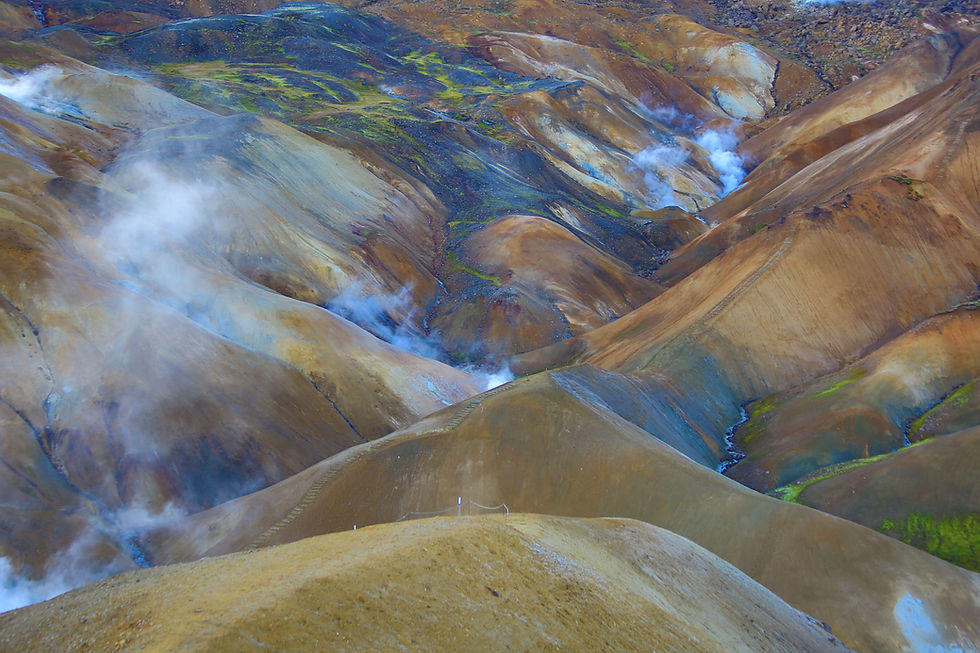Franz Josef Glacier Trail, Westland Tai Poutini National Park, NZ
- Apr 1, 2020
- 3 min read
Updated: Jan 3, 2023
The West Coast of New Zealand's South Island is famous for it's glaciers which are part of the Westland Tai Poutini National Park. These majestic glaciers are the sole reason why so many tourists flock to this remote part of South Island to behold it's grandeur. Timing is the key to experience these glaciers as this area gets a large amount of rainfall and at times, covered in fog where most if not all tour helicopters will be grounded due to the lack of visibility. One such occasion coincided with our trip there. Our glacier heli-hike had to be postponed due to fog cover and so we decided its best not to fly but instead take a short hike to see the glacier from a distance.

The parking lot at Franz Josef Glacier Trail was full of camper-vans and vehicles. We didn't expect such a huge turnout due to the unsettling weather. However, it turned out that many people braved the weather! It was a little chilly and there was a lot of moisture in the air. You could tell that it had been pouring for days as the ground was soaking wet and water was cascading down every inch of the surrounding cliff walls.

The first segment of the hike meanders through a lush native forest dripping wet with moisture. Soon, we popped out onto a saddle overlooking the entire floor of the valley, with a massive river - called Waiho, carving through the middle of it. This river is fed by the melting ice from the glacier at the top of the mountain range. From the U-shape valley or trough valley, this glaciation process has been going for eons.

From this high vantage point, we saw an unbroken stream of hikers trudging through the valley floor, making their way to and back from the glacier lookout point. The ruggedness and the rockfalls on both sides of the valley walls are living testaments to the great power of nature, still grinding and shaping the valley walls as the glacier retreats ever further back. As global warming continues, there is a tussle between nature's work and human's contribution which at times, are at odds with one another.
We dropped down to the valley floor, joining the hordes of hikers making their way towards the point. The ground was very rocky, having been grounded down by the retreating glaciers in the past.
The walls on both sides of the valley had many waterfalls cascading down from the top. It was very surreal to stop and appreciate the beauty of these many falls. There were also interesting rock formations, resulting from the many years of stone and ice grinding. Some were incredibly smooth - almost looking like a wave carved in stone.
In about 35 minutes into the hike, Franz Josef Glacier came into view. It was still very foggy but its easy to make out the glacier from afar with its bluish hue reflecting off the ice, a phenomenon known as Rayleigh scattering.

We could also see that the viewing platform was crammed like sardines so instead of following the crowd, we veered off the main trail onto a rocky outcrop for a better vantage point.

As we got to the top of a rubble of rocks, we were squarely in front of the glacier. It was a nice spot to be, away from the large crowd of people jostling around to take photos. Here, we had the entire view to ourselves!

If only we could get closer... But we held that thought as other thoughts of killed hikers come to mind since some have indeed been killed for getting too close to this very glacier, such that their bodies had to be bulldozed out from under the ice to be recovered. I guess this is actually close enough and a telephoto lens is a good and safe way to get closer! Here are some close up views of the Franz Josef Glacier.
To conclude, this is an easy hike catered to all ages, to a grand view of a glacier which has retreated quite far back as the planet continues to warm. At one point in the past, some 10,000-15,000 years ago, this glacier extended all the way to the Tasman Sea.

















Comments